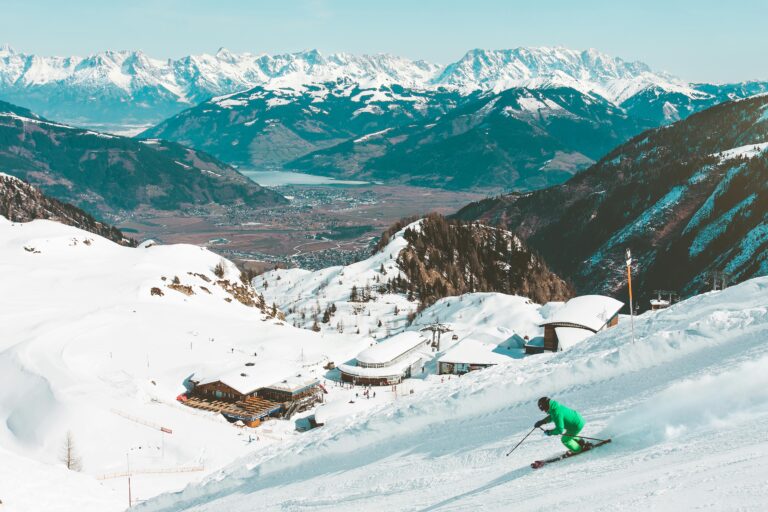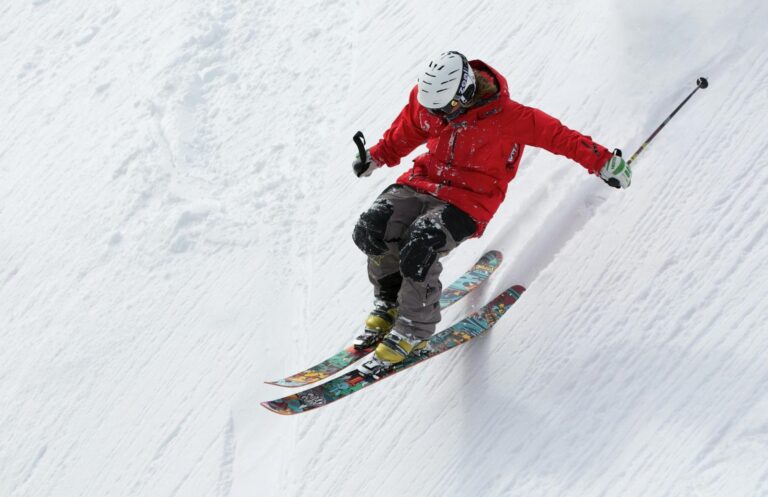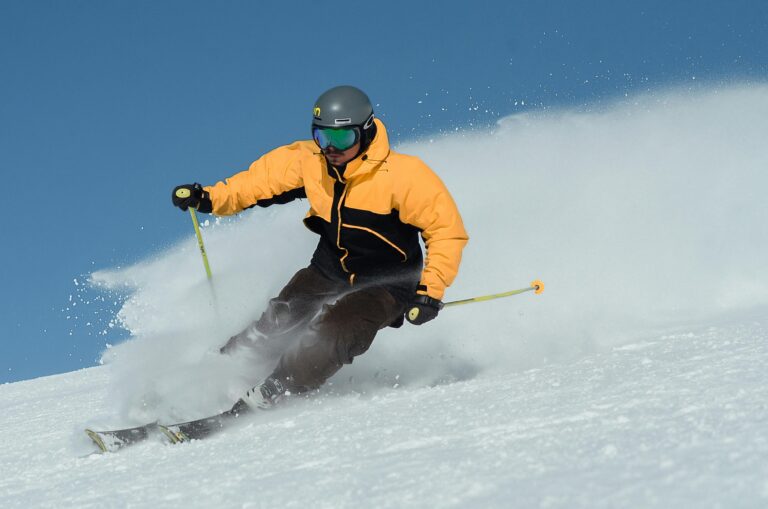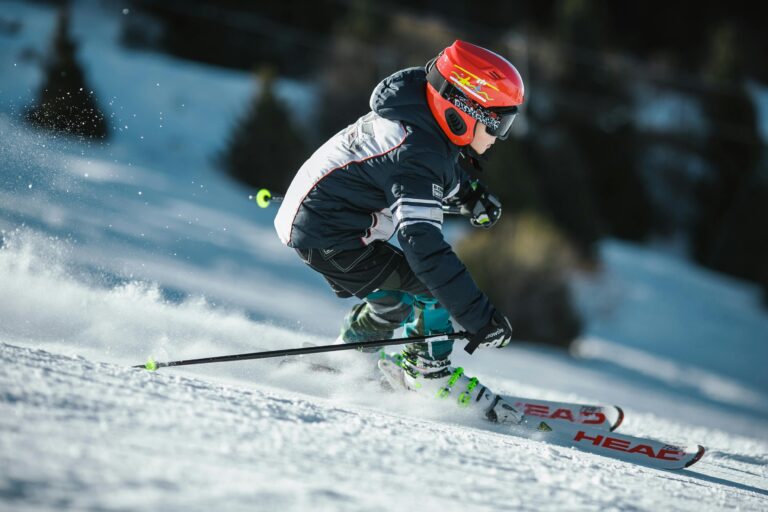Yes, skiing can cause lower back pain due to biomechanical stresses, inadequate core stability, or pre-existing conditions. Poor technique, prolonged exertion, and improper posture can all strain the lower back while navigating slopes or making turns. Addressing these issues through exercise and proper technique can help mitigate pain.
Skiing feels like flying, right? That fresh air, the rush of snow beneath your skis — it’s pure magic. But I learned the hard way how easy it is to pay for that thrill with a sore lower back. One sharp turn or an awkward move can leave you wondering, “What just happened to my back?” Understanding why skiing strains your lower back can help you enjoy those slopes pain-free.
Biomechanical stresses during skiing

Your spine goes through quite the workout on the slopes. Every twist, bend, and sudden stop puts pressure on your lower back. Ever made a sharp turn and felt that annoying twinge? That’s your back signaling it’s struggling. If your core isn’t strong or your posture is off, you’re asking for trouble. The American Academy of Orthopaedic Surgeons points out that many ski injuries link back to poor form. So, keeping your posture aligned isn’t just for looks — it’s your back’s best friend.
Core stability and muscle fatigue
Here’s the deal: your core is the real MVP when it comes to skiing. Without a strong core, your back becomes unstable, making pain and injury more likely. Picture this — your core gets tired halfway down the mountain, and your other muscles scramble to pick up the slack. That’s how overuse injuries start creeping in. Adding core exercises like planks, Russian twists, or dead bugs to your routine can make a huge difference. Trust me, your back will thank you.
Pre-existing conditions or injuries
If your back has been a troublemaker before, skiing might light that fire again. Herniated discs or chronic pain can flare up on the slopes. Your old injuries don’t just vanish; they wait in the wings, ready to complicate things. Before you hit the mountain, check in with your doctor. As we age, our backs get more fragile — so staying on top of your health is key to skiing pain-free.
How to Prevent Lower Back Pain While Skiing
Want to ski without waking up with a sore back? It’s all about prevention.
Proper warm-up techniques
Your body isn’t a car, but it still needs warming up. Before skiing, especially on cold mornings, get moving with dynamic stretches. Leg swings and torso twists wake your muscles up and get blood flowing. Give it a shot — you’ll thank yourself when you avoid that early stiffness.
Stretching exercises
Don’t skip stretching! Hamstring and hip flexor stretches, plus some gentle lower back twists, improve flexibility and ease tension. If you’re unsure where to start, this video breaks down some solid stretches: .
The importance of technique modification
Changing your stance might sound minor, but it changes everything. Keep your spine neutral and knees bent. That little tweak reduces back strain and actually helps you ski better. It’s like giving your back a little vacation while still tearing up the slopes.
Effective Treatments for Lower Back Pain Post-Skiing
Did you push too hard and wake up sore? Here’s how to bounce back.
Rest and recovery tactics
Take it easy. Rest doesn’t mean doing nothing — light activity and foam rolling can loosen tight muscles. Your back isn’t a machine; it needs breaks to heal. Listen to what it’s telling you.
Over-the-counter medications
Ibuprofen or other OTC meds can calm inflammation if the pain’s stubborn. Just double-check with your doctor about how much to take — playing it safe never gets old.
When to see a doctor or physical therapist
If your back pain sticks around or gets worse, don’t tough it out. Numbness, shooting pain, or weakness sound alarms. That’s your cue to see a pro — better safe than sidelined.
Strengthening Exercises for Skiers
Strong backs make for happy skiing seasons.
Core strengthening routines
Mix in core moves like planks, bird-dogs, and stability ball exercises. These build a solid base that supports your spine during every slope adventure.
Back exercises focusing on flexibility
Flexibility helps you stay loose and avoid injury. Cat-cow stretches and seated forward bends open up your motion and keep stiffness at bay.
Importance of a balanced fitness regimen
Fitness isn’t just about strength. Adding cardio and flexibility work balances your body, making you a more resilient skier who can enjoy more runs without the ache.
The Role of Equipment in Back Pain Prevention
Your gear matters — a lot.
Ski fit and alignment
Ill-fitting skis can throw off your balance and crank up back stress. Make sure your skis suit your body size and style for smooth, pain-free turns.
Importance of proper boot fitting
Ski boots should be comfy but snug. Too tight? You’ll be pinching nerves. Too loose? You risk injury. A professional fitting is worth every penny.
Using correct ski poles
Ski poles aren’t one-size-fits-all. Your elbows should bend about 90 degrees when gripping them. The right pole length helps maintain good posture and eases back strain.
Frequently Asked Questions
Can skiing lead to permanent back pain?
Yes, if not addressed properly, the strain and injuries from skiing can lead to chronic back pain. Proper technique, strengthening exercises, and recovery plans are crucial for long-term spine health.
Is it safe to ski with lower back pain?
Skiing with existing lower back pain can lead to exacerbation of the pain or further injury. It’s advisable to consult a medical professional before skiing again if experiencing pain.
What are the best stretches to do before skiing?
Effective stretches include hamstring stretches, hip flexor stretches, and lower back twists. These stretches help prepare the body for the demands of skiing, promoting flexibility and reducing injury risk.
How can I strengthen my back for skiing?
Incorporating exercises like planks, bridges, and specific core workouts can significantly strengthen the back’s supporting muscles, enhancing stability and performance during skiing.
Skiing is an amazing way to escape, but your back needs to be on board. Want to boost your fitness for the slopes? Check out Skiing and Weight Loss for more tips on keeping in shape while having fun.
And don’t forget to get those muscles moving with this flexibility video: . Stay strong and happy skiing!






